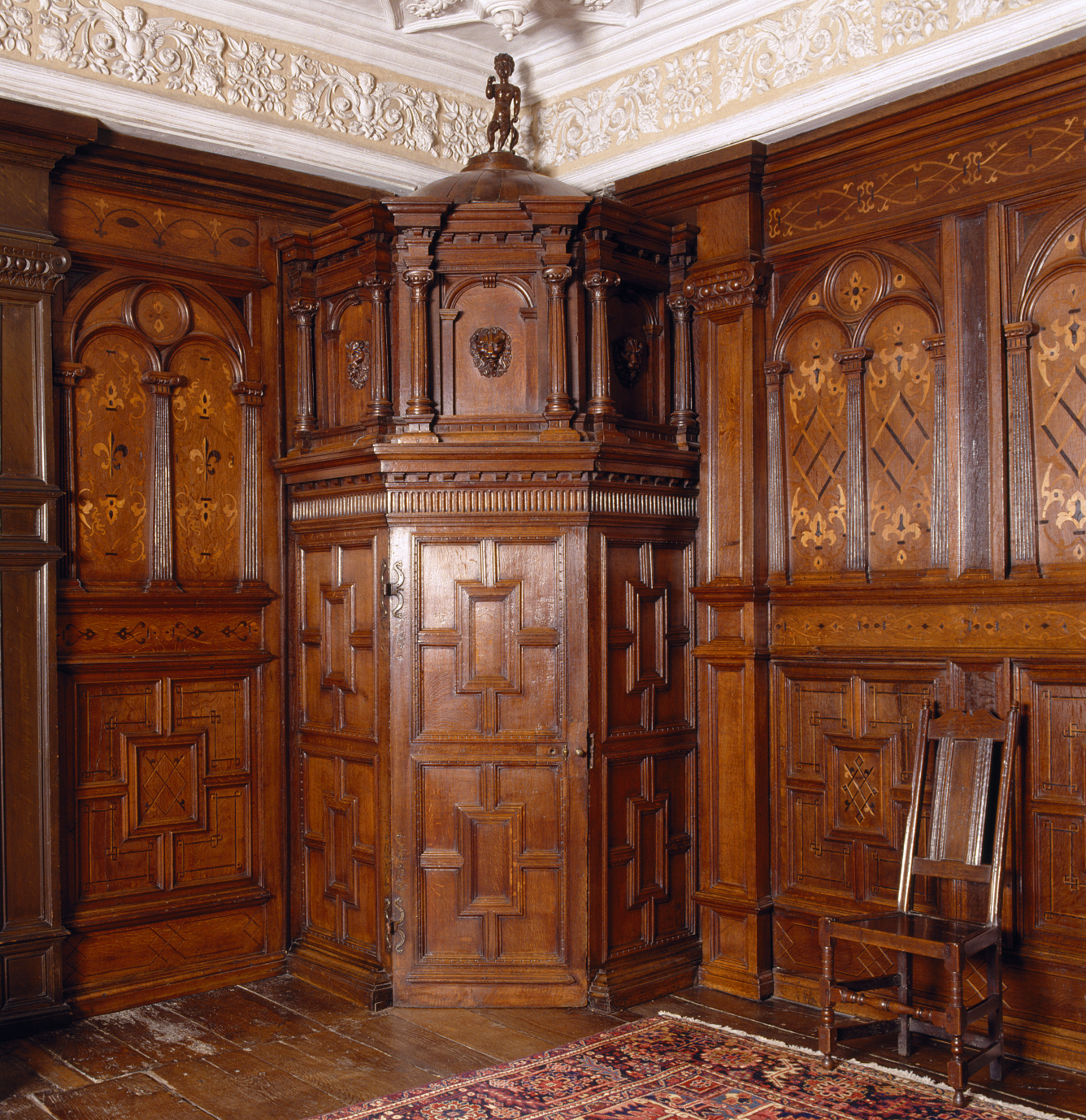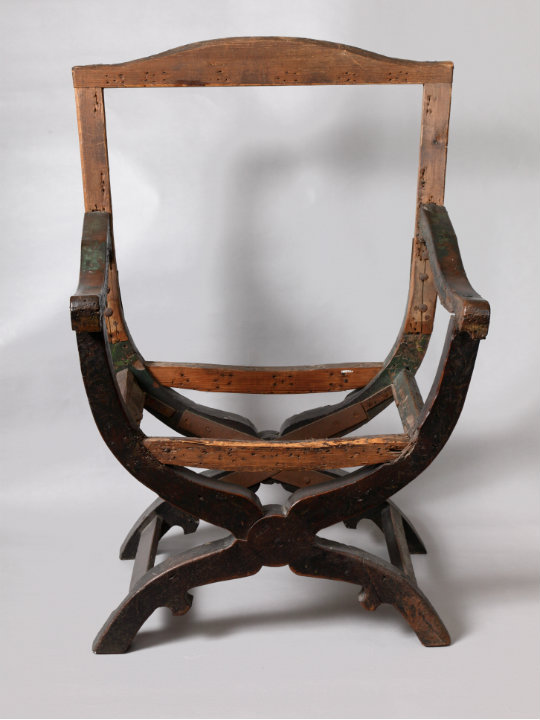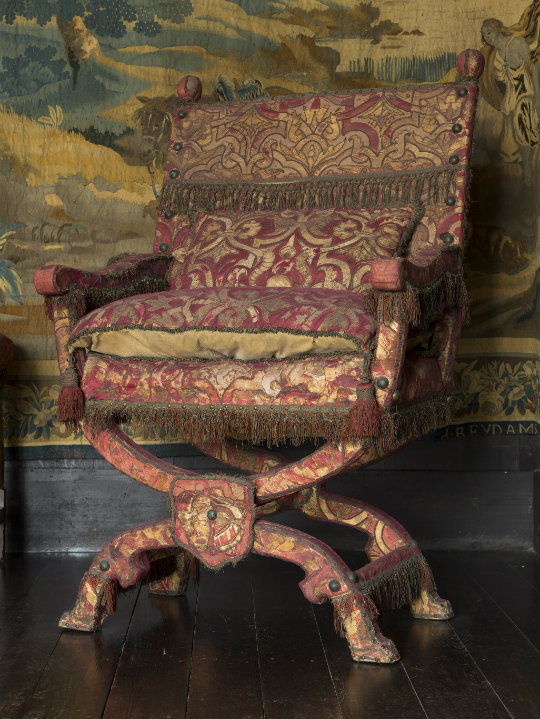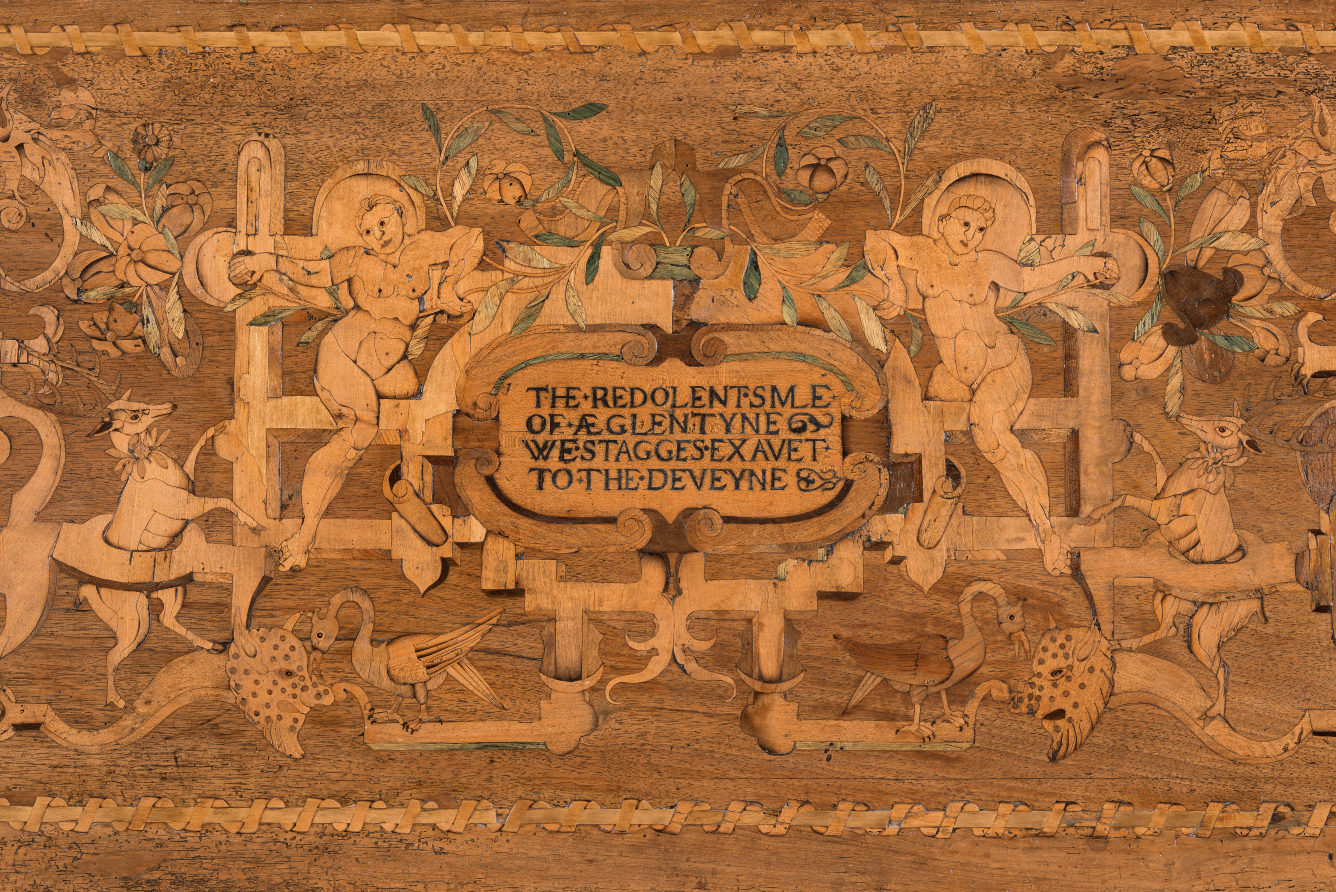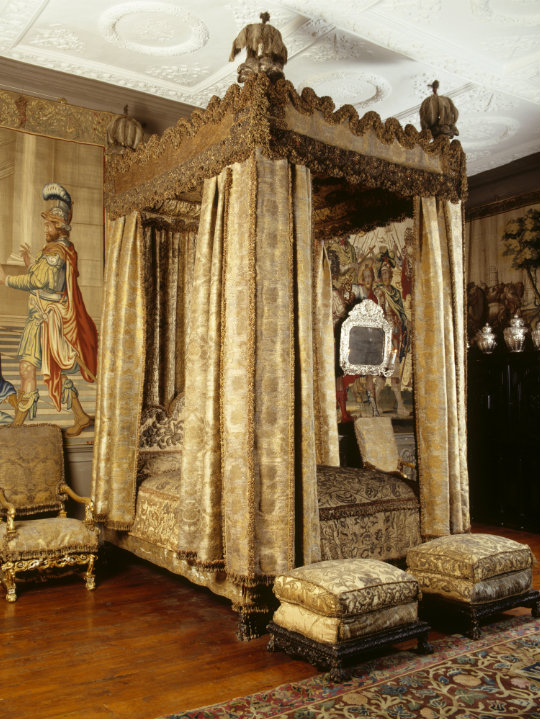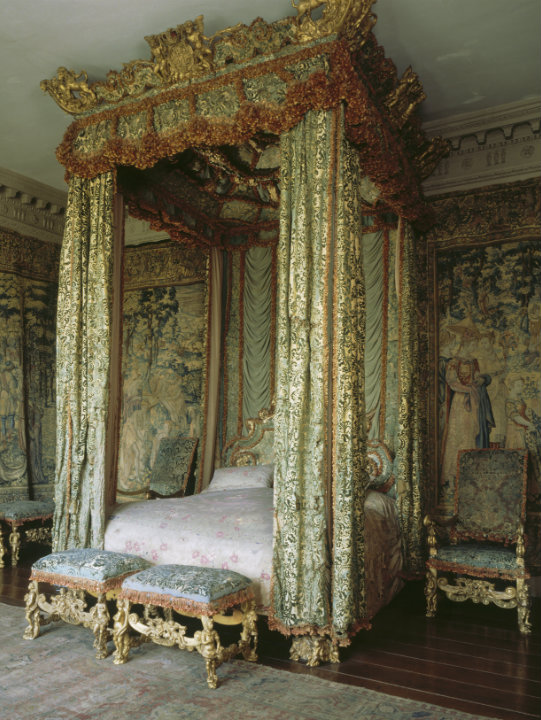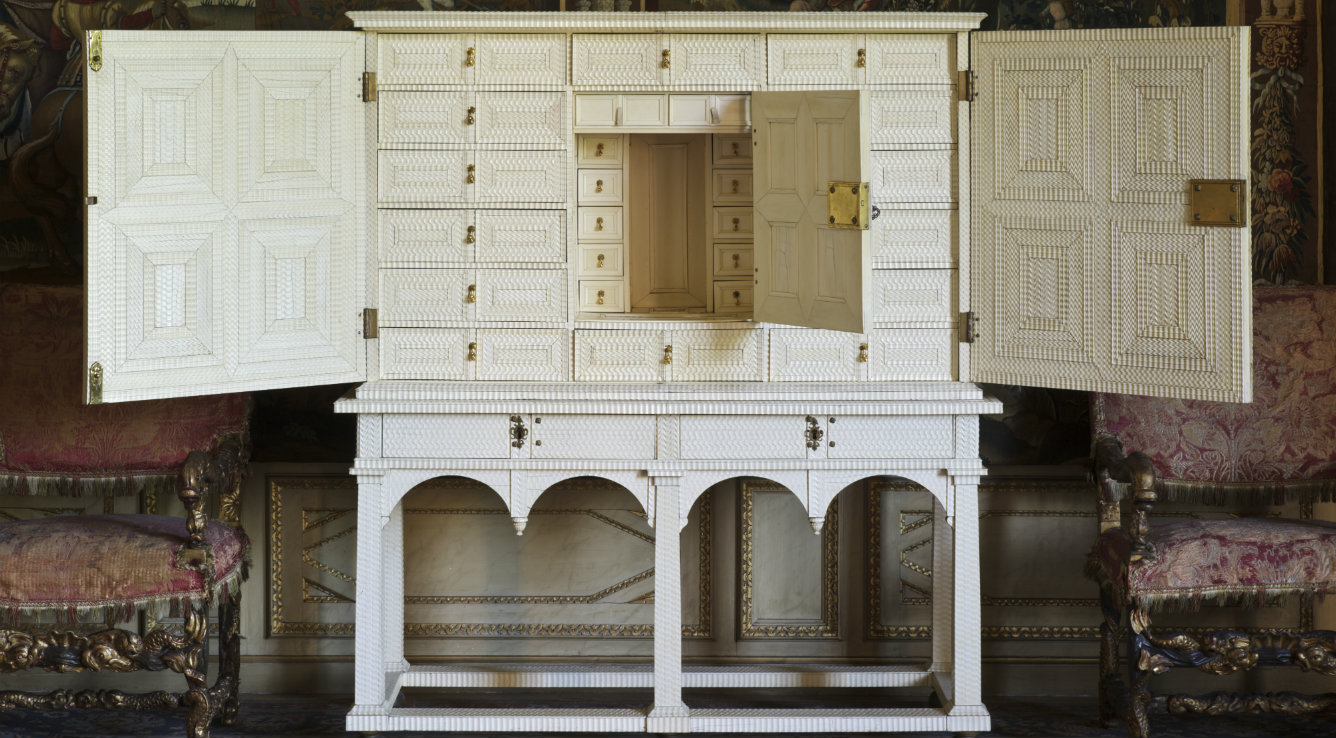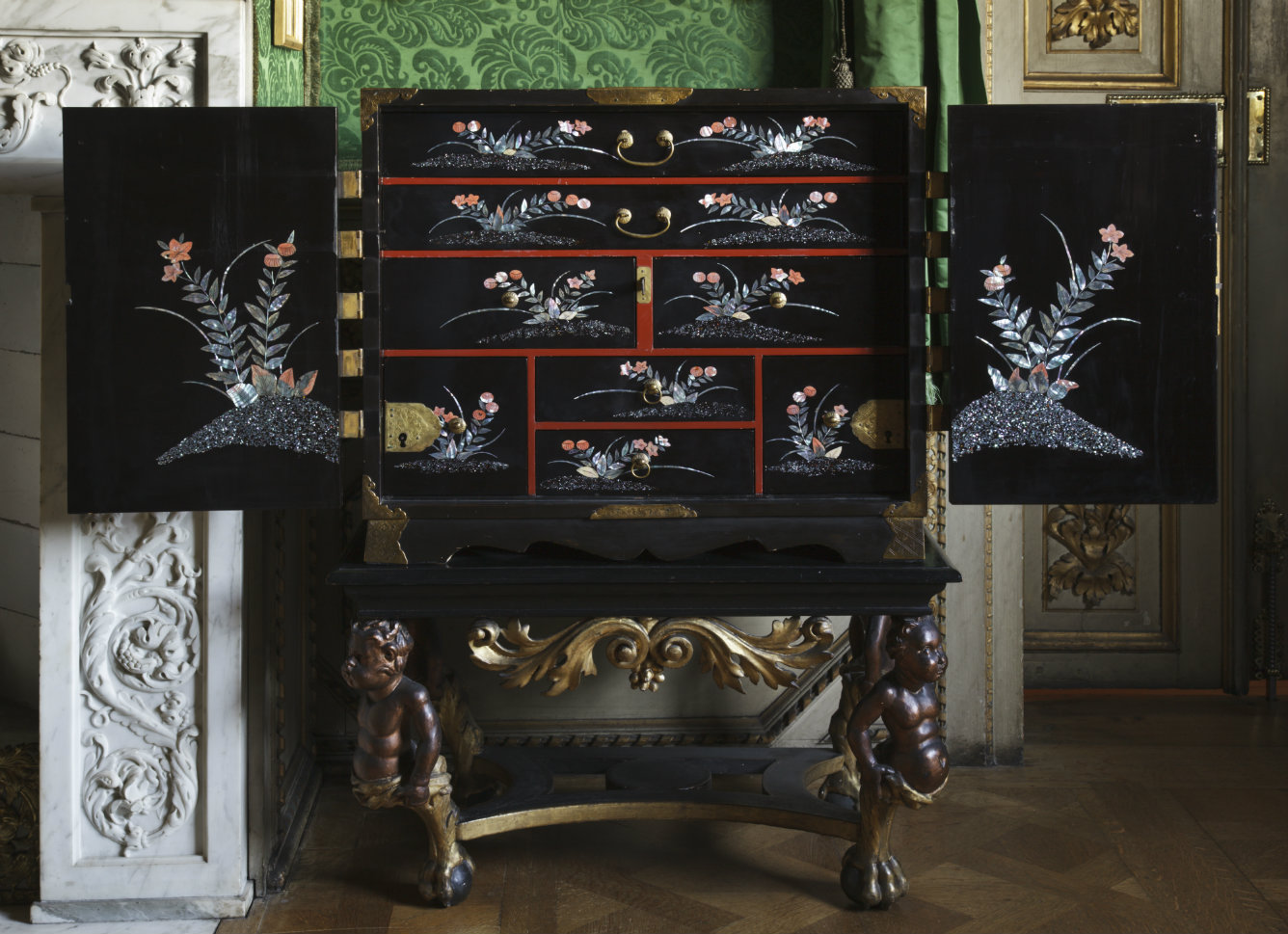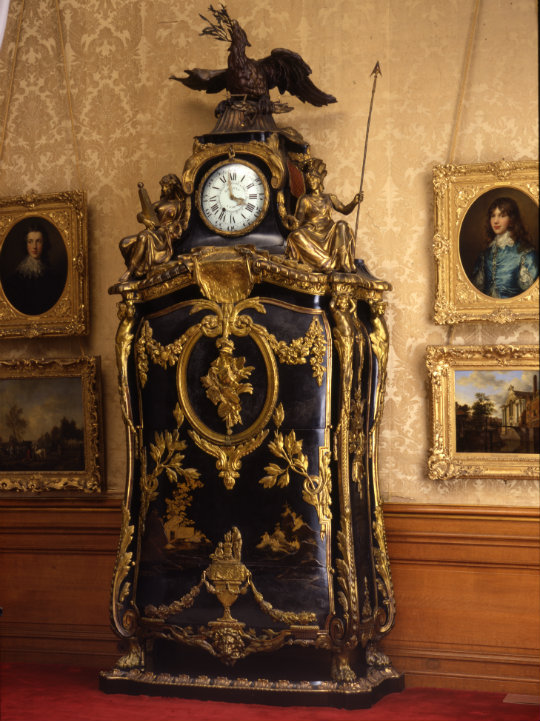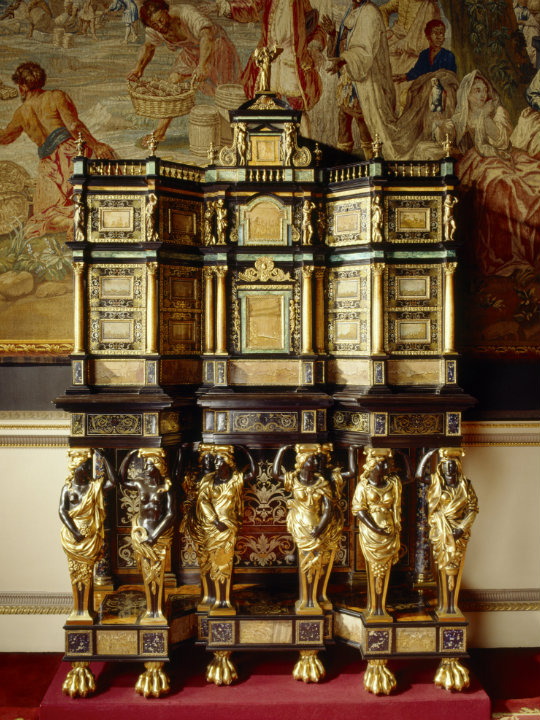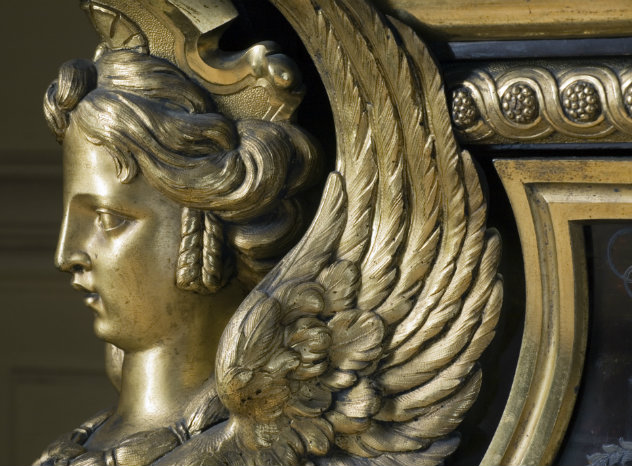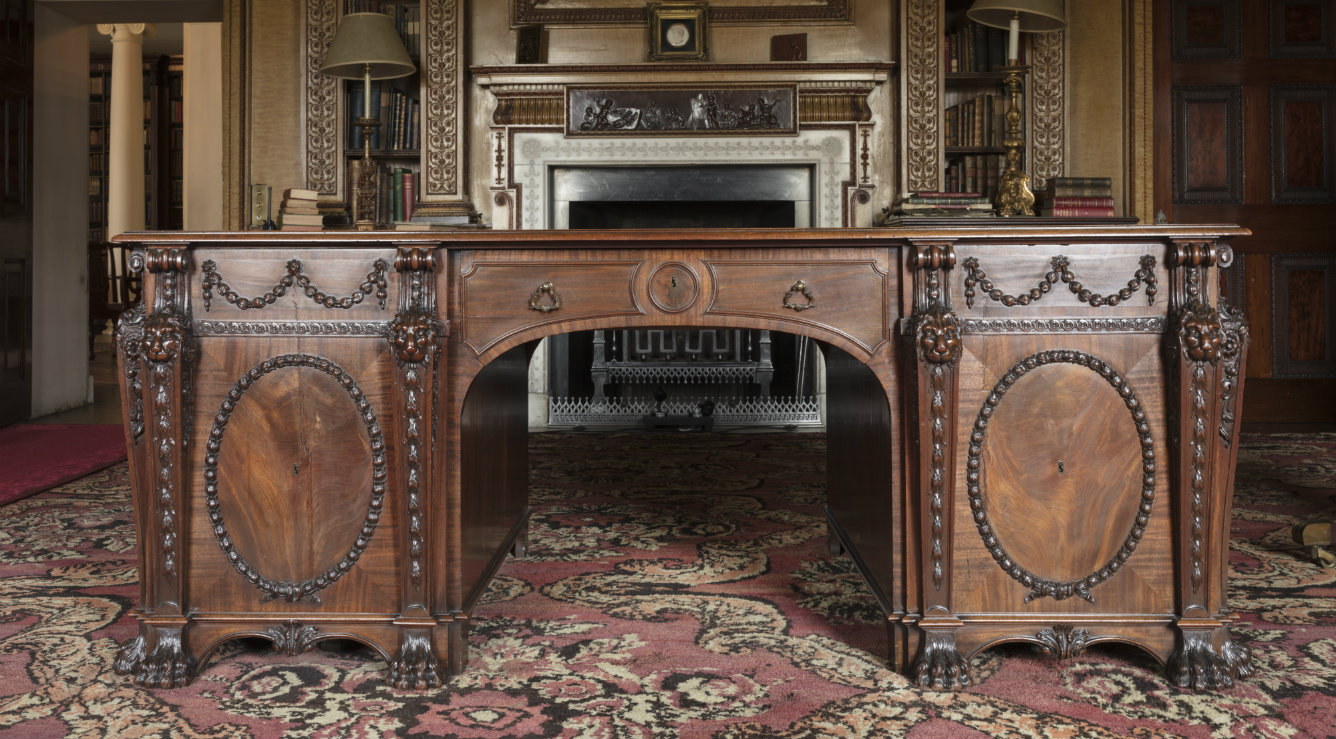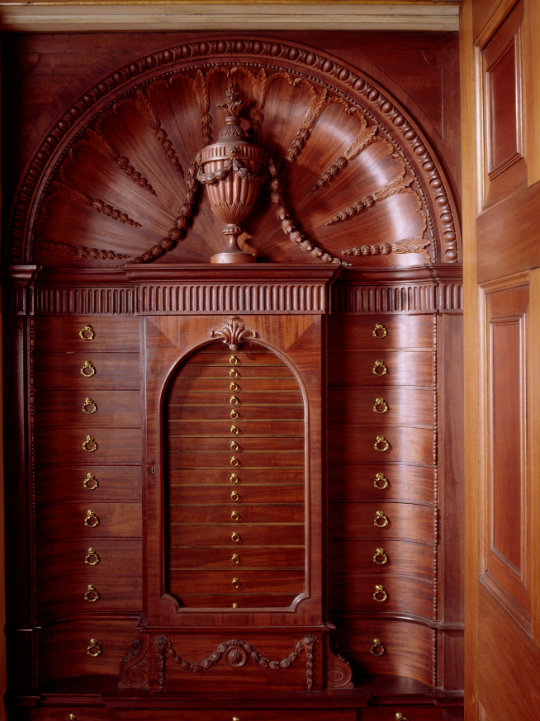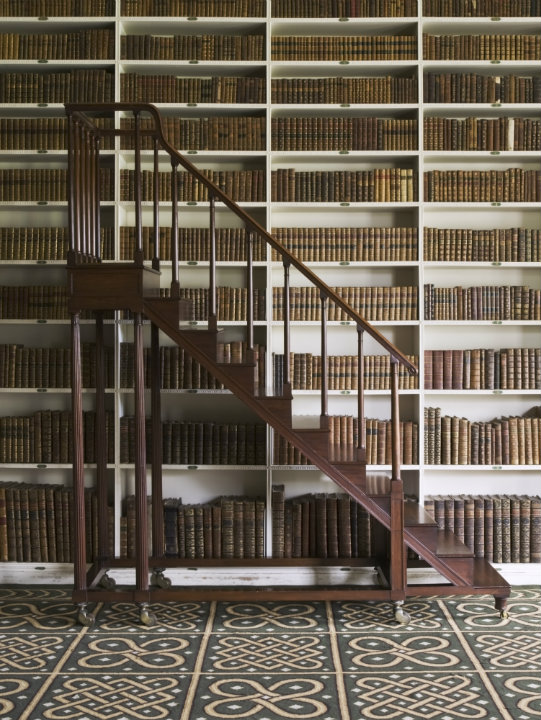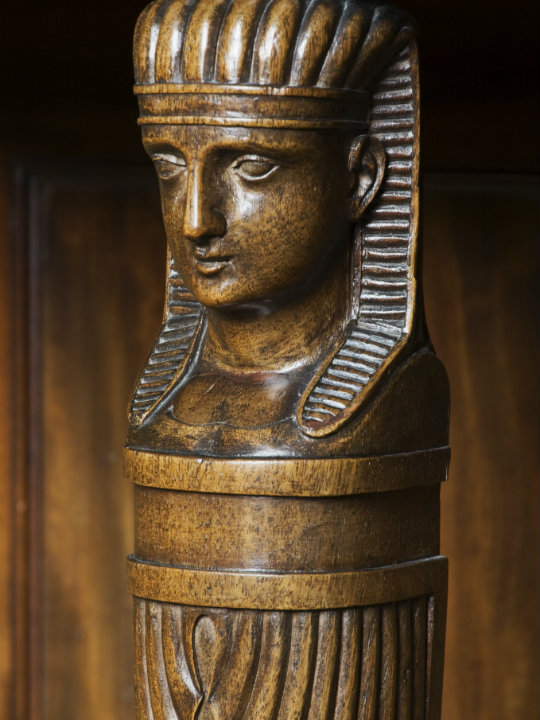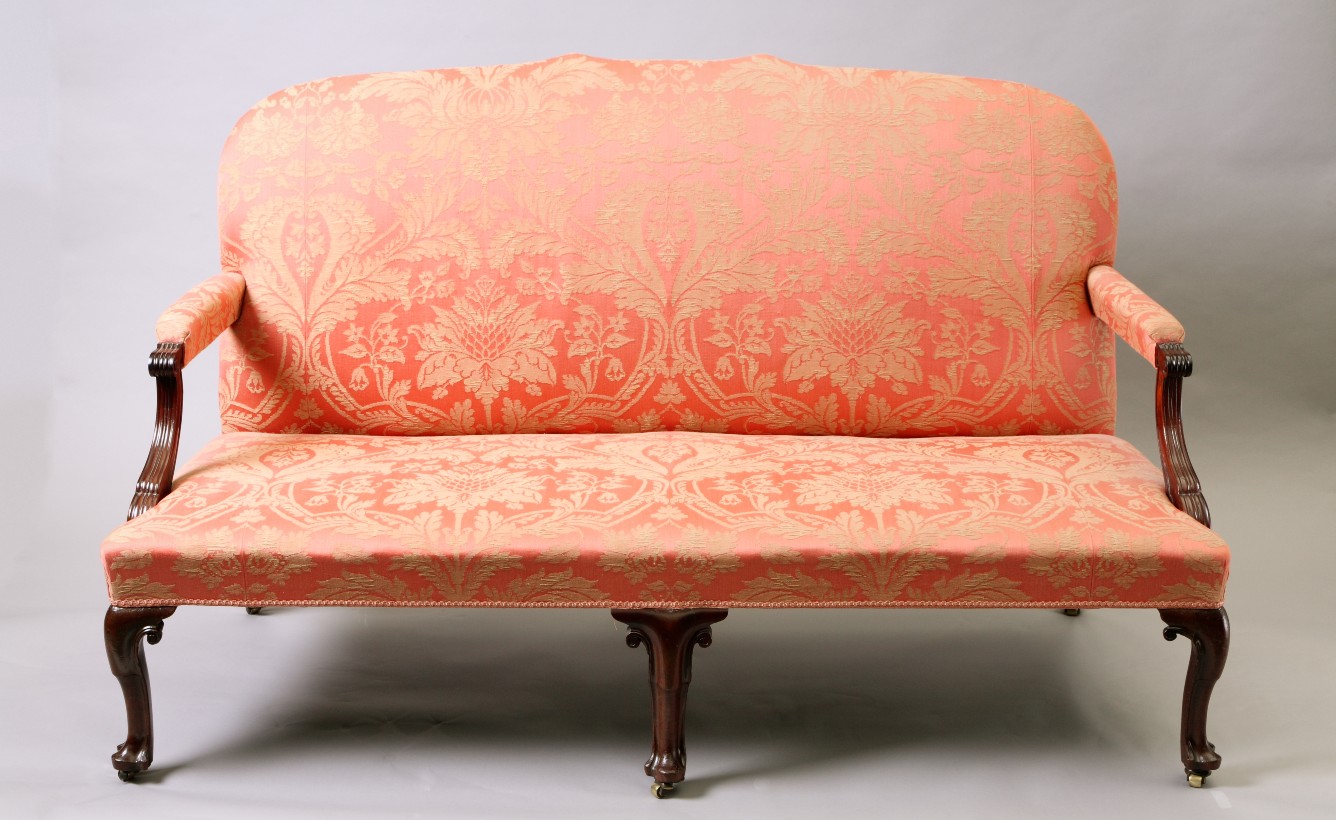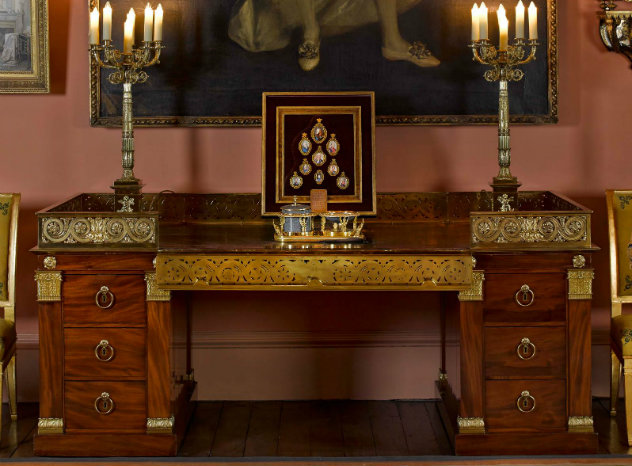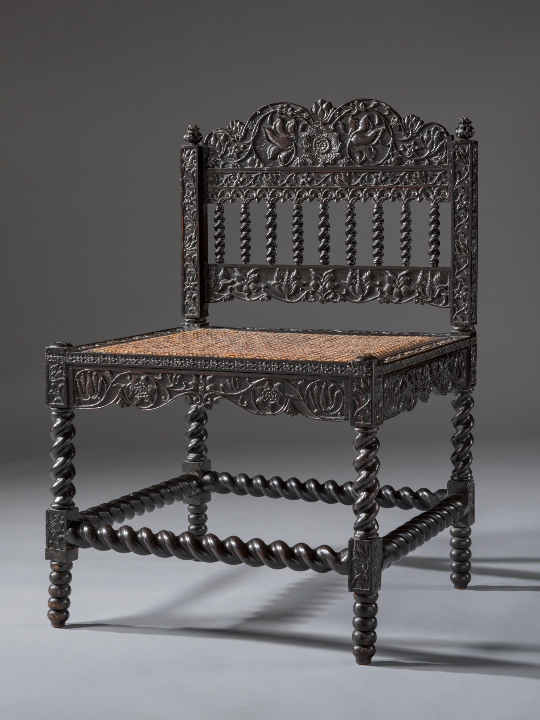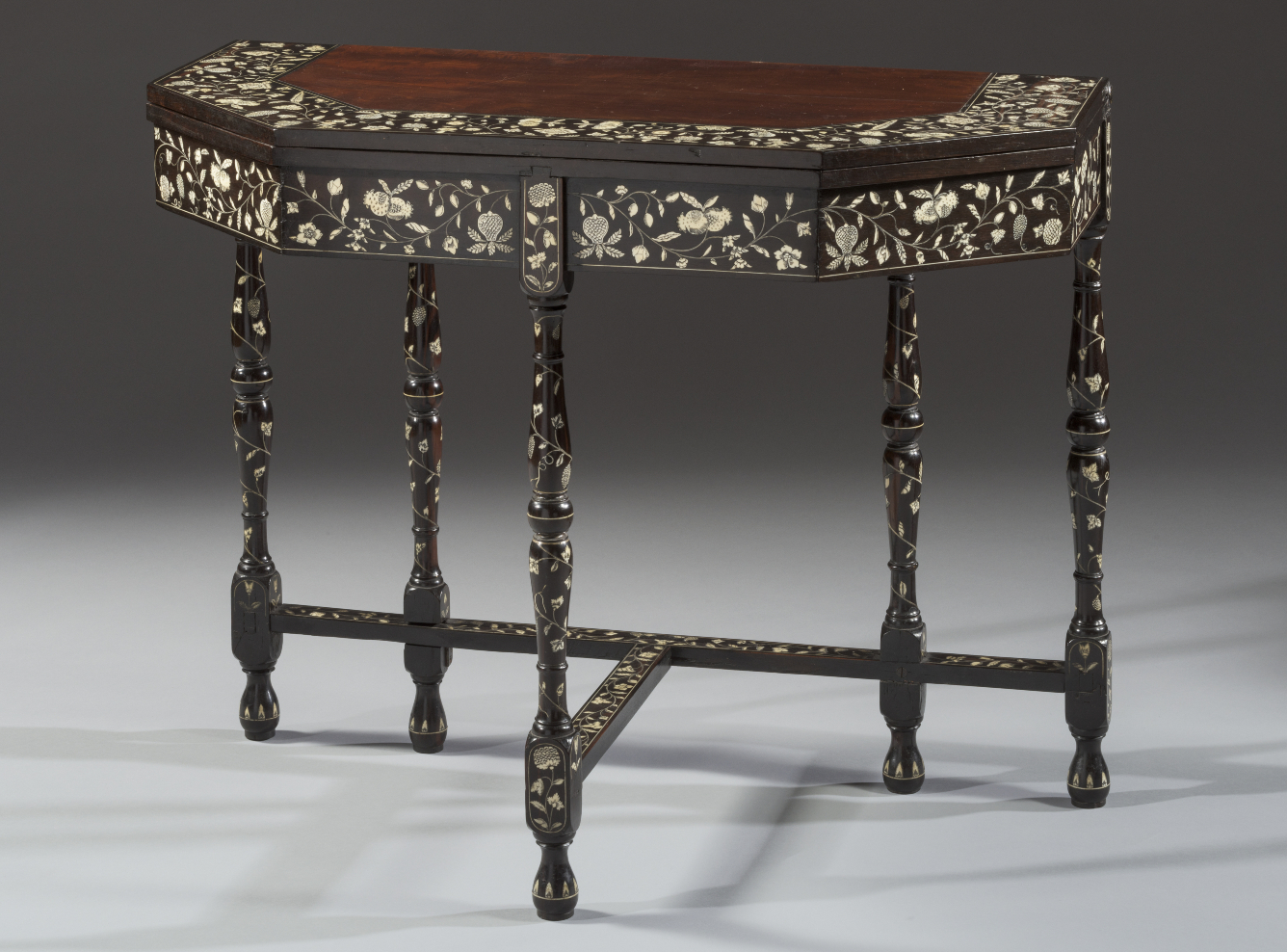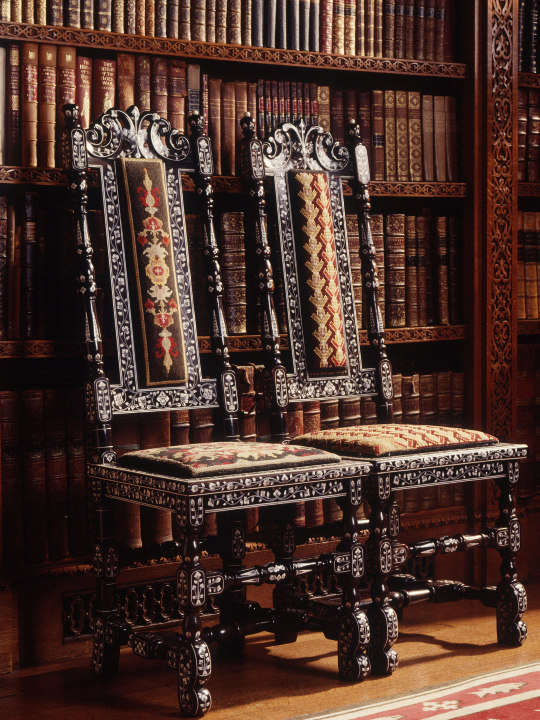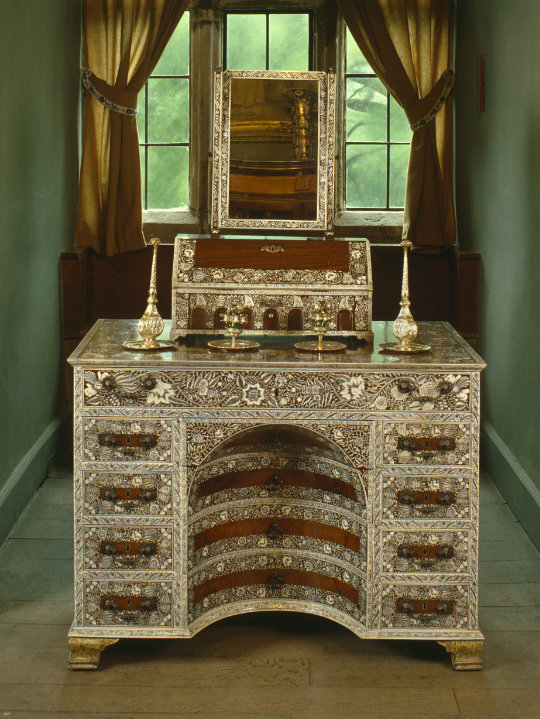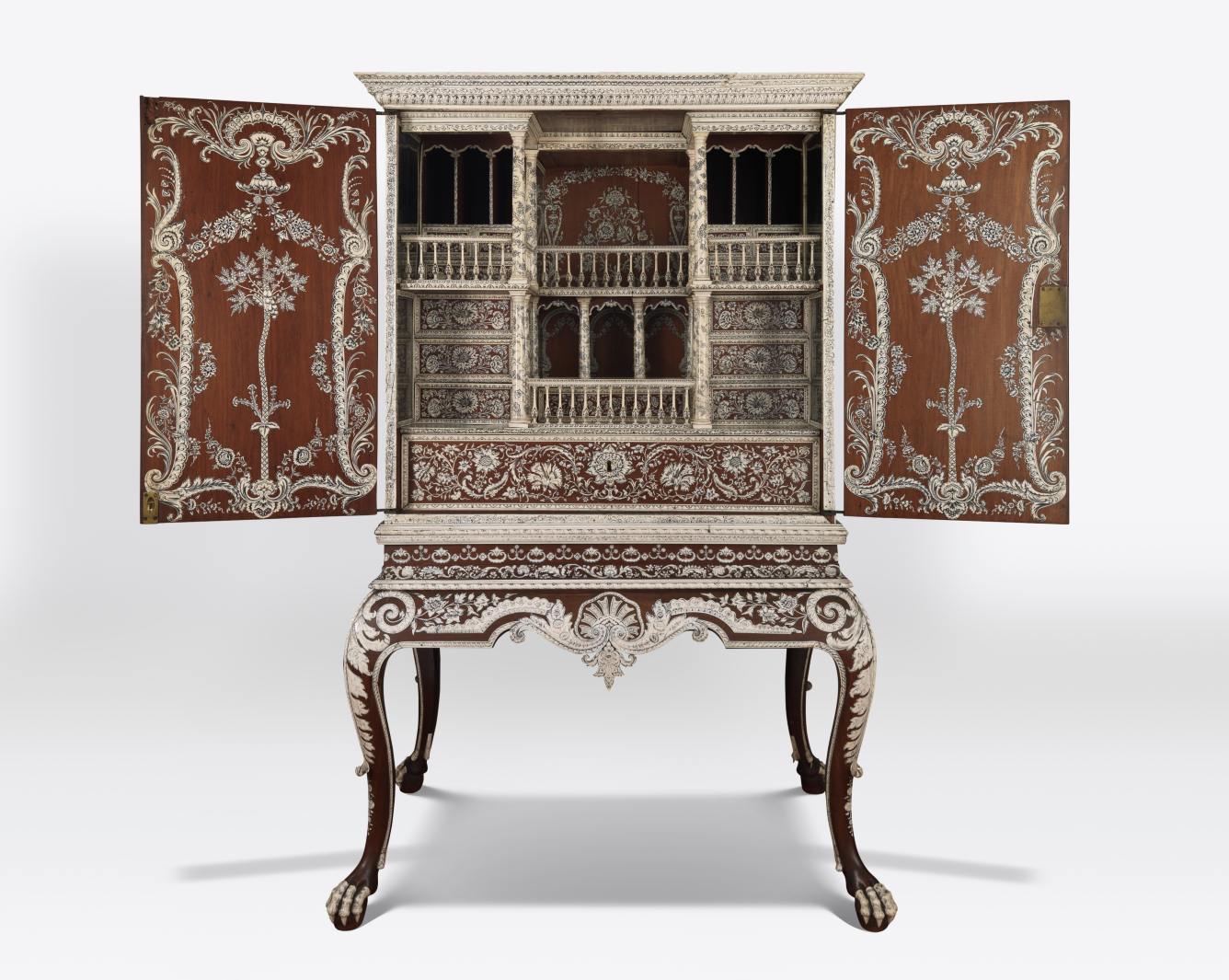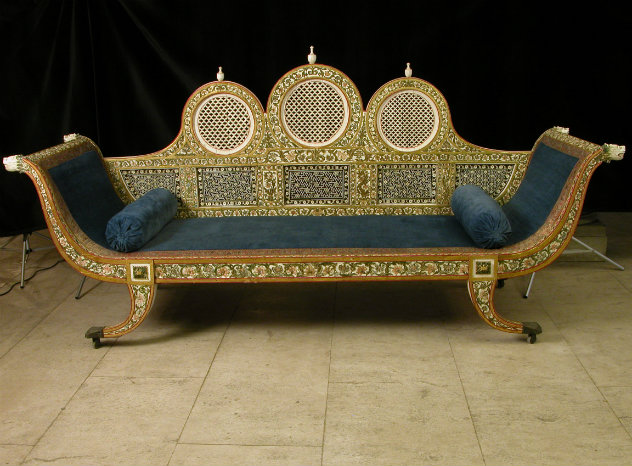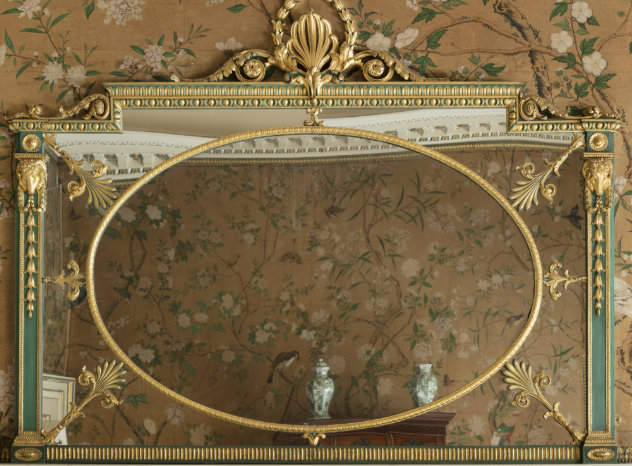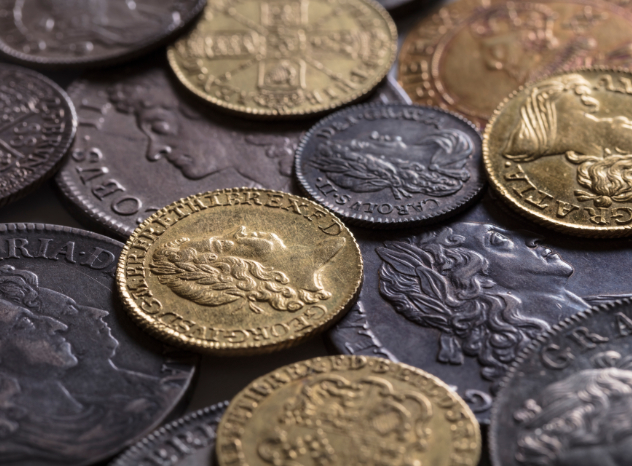The National Trust’s furniture collection is as significant as it is varied. With approximately 55,000 individual pieces, the Trust’s holdings of furniture rank amongst the largest and most important international collections in the world.
National Trust houses contain ‘the most important corpus of English furniture in existence, important not only in the sense that implies rarity and good craftsmanship, but because so much of it survives in the setting for which it was intended.’[i]
This furniture ranges in quality from the fashionable productions of the finest London cabinet-makers to those of their regional contemporaries elsewhere in England, Wales and Northern Ireland, from the costly contents of drawing rooms to the utilitarian furnishings of the servants’ quarters in basements, attics, offices and outbuildings.
16th-century English furniture
Sizergh Castle in Cumbria and Hardwick Hall in Derbyshire house some of the most celebrated pieces of 16th-century furniture in the country.
The magnificent Inlaid Chamber at Sizergh is a jewel of Elizabethan artistry. Panelling covers all four walls of the room, featuring lavish inlay of interlacing arches and crescents, fleurs-de-lis and foliate patterns. The result is the most visually striking Elizabethan joinery to survive in the north of England.
In 2016, a very important X-frame chair was discovered in the attics at Hardwick Hall. Kept in store because of its dilapidated condition – the chair lacks upholstery and top covers and shows signs of repairs and replacements – it must in fact have once stood in one of the house’s principal rooms, and may have been used by Bess of Hardwick herself (c.1527-1608).
The Hardwick chair is of the same type as the celebrated 17th-century X-frame chairs of state at Knole, Kent, but several factors suggest that it might be earlier in date.
For centuries, the so-called ‘Aeglentyne Table’, probably made in London around 1568, has been a draw for those visiting Hardwick. Its highly elaborate marquetry top depicts musical instruments, musical scores, playing cards, gaming boards and strapwork containing armorials, symbols and mottoes of the Hardwick, Cavendish and Talbot families.
Royal furniture at Knole
Thanks to the avid collector and courtier Charles Sackville, 6th Earl of Dorset (1643-1706), Knole contains the most significant assemblage of textile-covered seventeenth-century royal furniture in existence: two state beds that belonged to James II, a table and stands commissioned by Louis XIV and numerous chairs that came from Whitehall Palace and Hampton Court as perquisites of Dorset’s post as Lord Chamberlain, which allowed him to remove out of date furniture.
The earlier bed was made in Paris and was either a gift from King Louis XIV to his first cousin James, Duke of York (later James II) and his consort Mary of Modena for their wedding in 1673, or was ordered by James himself. It is one of the most remarkable French seventeenth-century state beds to survive. The silk hangings and seat covers of the bed and its matching seat furniture, woven with gold and silver bullion, constitute an immensely rich evocation of a Louis Quatorze bedchamber translated to England.
The later bed, by contrast, is English and was ordered by the Great Wardrobe for the apartments of James II (now king) at Whitehall Palace in August 1688 – only three months before he fled to France and exile. The richly carved and gilded bed, with fine hangings of blue-green Genoa velvet comes en suite with a set of two armchairs and six matching stools probably supplied by Thomas Roberts of ‘The Royal Chair’, and form one of the most spectacular and historically important sets of late Stuart regal furniture.
The 17th-century furniture at Ham House
Ham House, Surrey, is one of the most complete and well-documented seventeenth-century houses in Europe, with rare interiors, furniture and picture frames dating from the reigns of Charles I and II.
This remarkable collection includes a host of masterpieces, amongst which is an exceptionally rare ivory cabinet, probably made in The Hague between 1650 and 1660, and first recorded at Ham in 1677. Veneered with geometrically arranged parquetry, the cabinet is fully-fitted with 26 drawers, including two secret ones and a secret compartment. It is a unique treasure – no other example is known. A now lost suite of ivory furniture, which Count Johan Maurits of Nassau-Siegen is said to have had made in Brazil and brought with him when returning to Holland in 1644, may have inspired this sensational piece, which would have been immensely expensive and exclusive at the time.
Lacquer furniture
In 1677, two Japanese cabinets and stands were recorded in the Green Closet at Ham House, the sole surviving Charles I cabinet room for the display of small paintings and other rarities. The two pendant cabinets, on English stands, made of lacquer inlaid with mother-of-pearl, are exceptionally rare and early examples of imported luxury goods that became very fashionable throughout Europe in the last quarter of the century.
Parisian furniture
Almost 700 pieces of Oriental lacquer furniture, or of Oriental lacquer incorporated into European furniture are in the care of the National Trust .The largest is at Waddesdon Manor, Buckinghamshire, home to one of Britain’s most distinguished collection of 18th-century French furniture.
Waddesdon's huge, combined drop-front secrétaire, cabinet, bookcase and clock was made in Paris around 1774 by the bronzier, Jean Goyer, and ébéniste René Dubois, working at the Faubourg Saint-Antoine. Combining both Japanese lacquer and French japanning or imitation lacquer, this somewhat incongruous piece continues to present a puzzle. Research continues to try and identify who commissioned the largest piece of furniture made in Paris in the eighteenth-century.
Another imposing and enigmatic example of Parisian cabinet- making is a c.1670 cabinet at Nostell Priory, inherited by Sabine d’Hervart (1734-1798) wife of Sir Rowland Winn (1739-1785), Chippendale’s patron. Cabinets such as this were highly popular with the highest echelons of French society during the reign of Louis XIV. It is likely, therefore, to have been first acquired or commissioned by Sabine’s ancestor, Barthélemy Hervart (1607-1676), a talented banker with roots in Augsburg, who advanced to become Controller-General of Finances to the Sun King.
André-Charles Boulle (1642-1732)
André-Charles Boulle, ébéniste to Louis XIV, remains the biggest name in French furniture- making. The Boulle commode at Petworth, Sussex is of the same model as a pair supplied to Louis XIV’s bedchamber at the Grand Trianon, Versailles, in 1708. The Versailles commodes are unique as the only pieces documented as by Boulle rather than attributed to him on the basis of his designs.
The sculptural quality of the Boulle commode (one of the first chests of drawers) – including the extraordinary bronze corner mounts of winged sphinxes above the naturalistic lion's paw and acanthus feet – designates the Petworth version of the royal original as a masterpiece in the annals of furniture history.
Thomas Chippendale (1718-1779)
Boulle’s fame is arguably only trumped by that of Thomas Chippendale, whose work is represented at Nostell Priory, Osterley, Petworth and Saltram. Probably the most influential British furniture maker to have ever lived, Chippendale and his workshop combined bold new designs with refined craftsmanship. His legacy depends upon his superbly made, elegant furniture and upon the lavish publication of his own designs in his famous The Gentleman and Cabinet Maker’s Director (1754).
The library table supplied by Chippendale for Nostell Priory in 1766-7 is widely considered the finest piece of mahogany furniture Chippendale ever produced.[ii] It was also the single most expensive piece of furniture he supplied to Nostell, and Sir Rowland Winn, 5th Baronet (1739-1785) was justly proud of it. In his bill, Chippendale described it as 'finish'd in the most elegant taste' and made 'of very fine wood'.[iii]
Thomas Chippendale Junior (1749-1822)
The work of Chippendale’s son, Chippendale Junior (1749-1822), in turn, is well represented at the library at Stourhead, Wiltshire, where he was employed by Sir Richard Colt Hoare (1758-1838) from 1795 to 1820 to supply furniture and furnishings. These include a large set of mahogany library steps, a mahogany- and ebony-strung library table and mahogany and cane library chairs decorated with carved Egyptian heads.
John Linnell (1729–96) and Gillows of Lancaster
Two other workshops that have supplied numerous pieces to National Trust houses are those of John Linnell and Gillows of Lancaster and London.
Linnell's sumptuously carved giltwood sofas made to the design of Robert Adam (1728-92) for Kedleston Hall, Derbyshire are among the most architectural and Italianate pieces of furniture in Britain.
At Sizergh Castle, Cumbria a significant set of seat furniture by Gillows of Lancaster was commissioned by Charles Strickland (1734-1770) in June 1761. The so-called ‘French’ chairs and a matching sofa are amongst the earliest examples of documented furniture by Gillows, a firm that produced some of the finest examples of English furniture for more than 150 years.
German and Austrian furniture at Mount Stewart
Although British furniture is the major strength of the collection, the Trust’s European and Oriental furniture is both numerous and significant. At Mount Stewart, County Down, the remarkable Congress of Vienna table and chairs – said to have been presented to Viscount Castlereagh (1769-1822) at the 1814-5 Congress, which sought to re-organise Europe before and after the fall of Napoleon – are particularly intriguing, given their political context.
The table is distinguished by the scale and remarkable quality of the gilt-bronze ornaments and gallery surrounding its top, revealing sculptural modelling, chasing and gilding of the highest order. The likelihood is that this is a rare example of Viennese furniture at its very best.
Italian furniture at Stourhead and Attingham Park
The imposing Pope’s Cabinet at Stourhead, Wiltshire, was made in Rome around 1585, and is not only an exceptional example of Italian craftsmanship, but the richest and most elaborate of all surviving pietre dure (hard stone) cabinets in the British Isles. Luxury cabinets, such as this, were conceived with elaborate architectural Mannerist façades of ebony and gilt-bronze, which served as a frame to show off the most spectacular and costly pietre dure inlay – an immensely time-consuming technique of marquetry using different coloured pieces of highly polished marble, porphyry, jasper and other rich materials.
The Stourhead Cabinet is thought to have once belonged to Pope Sixtus V, to whose brother’s family, the Perettis, it passed after his death. The last of the Perettis being a nun, the cabinet was left to a convent in Rome, from which it was purchased by Henry Hoare II (1705–1785), known as ‘the Magnificent’, who brought it to Wiltshire in 1742. The arcaded mahogany pedestal in the manner of William Kent (c.1685-1748) was made by a certain ‘Mr James’ with carvings by John Boson (c.1696-1743).
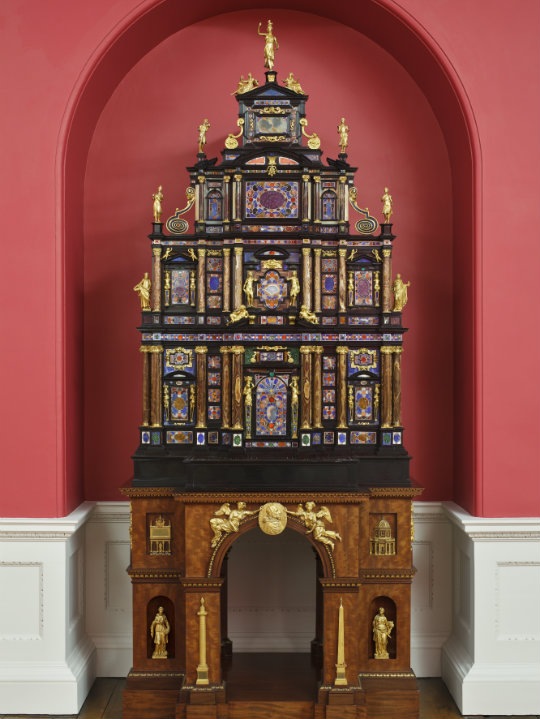
The so-called ‘Sixtus Cabinet’ or ‘Pope’s Cabinet’, ebony, gilt-bronze and hard stones, Rome around 1585
Stourhead, Wiltshire
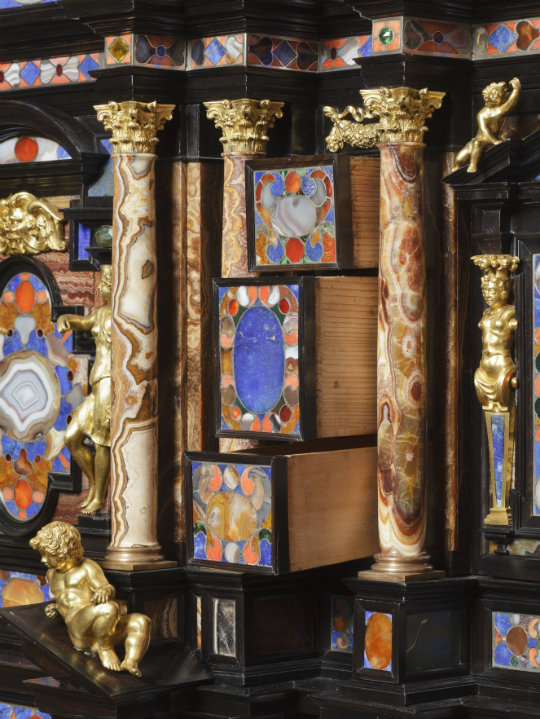
Detail of the ‘Pope’s Cabinet’ showing the high quality of its gilt-bronze mounts and hard stone inlay
The extensive Italian seat and cabinet furniture at Attingham Park, Shropshire, was acquired by William Noel Hill, 2nd Lord Berwick, while George III’s envoy to Turin and later Naples. Throughout his stay in Italy, Berwick kept a palazzo in Genoa and it appears that the white and gold chairs and stools were in fact made for his contemporary, Queen Maria Theresa of Sardinia (1773-1832), whose cipher on the famous daybed has been newly interpreted as hers. The day bed comes en suite with a peculiar chair on satyrs’ legs, possibly designed by the Milanese architect and academician, Giocondo Albertolli (1743-1839).
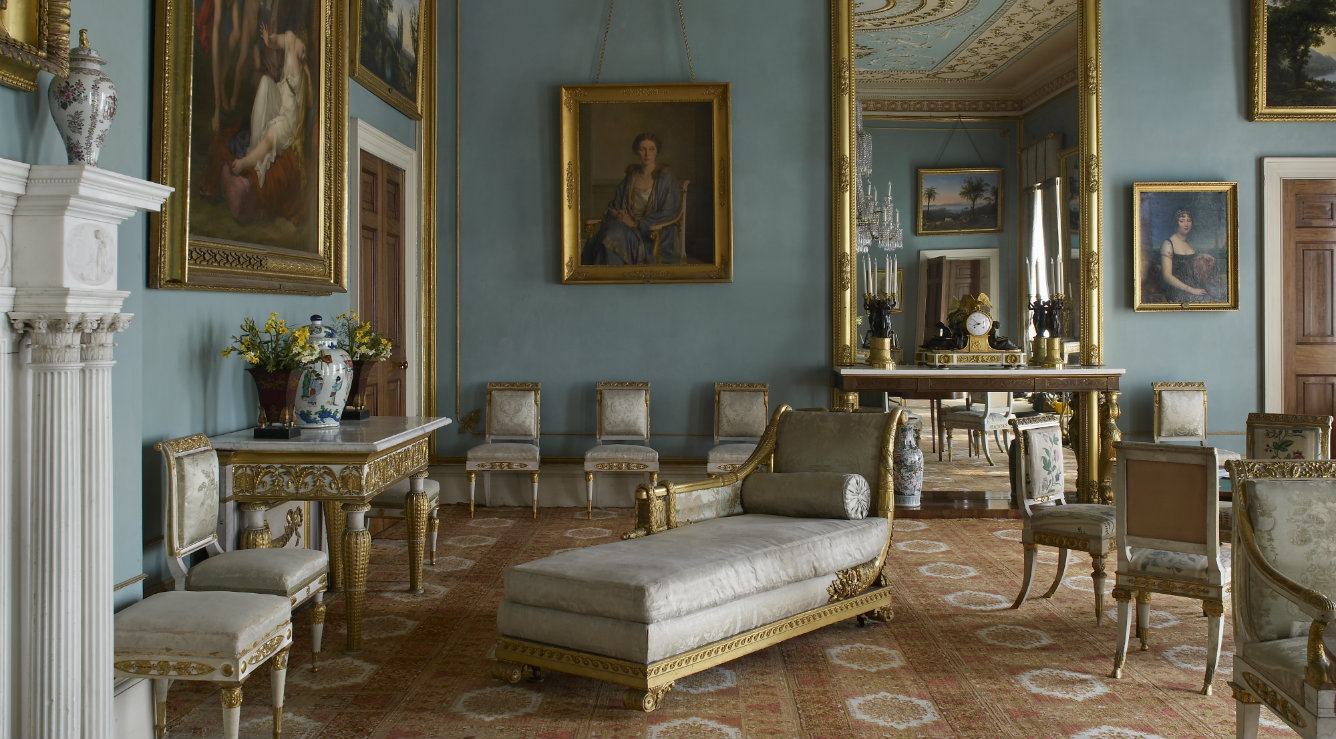
Milanese (1780s) and Genoese (c.1825-7) furniture inside the Drawing Room at Attingham Park, Shropshire
Indian furniture
The Indian furniture in National Trust collections is a legacy of Britain’s colonial activity over four imperial centuries. The majority of the collections’ notable pieces were made in south-eastern India, in states bordering the Bay of Bengal on what is now called the ‘Coromandel’ Coast. Rich in natural resources, the area attracted European trading interest from the middle of the 17th century and this led to the emergence of a market in carved ebony furniture – heavily influenced by Dutch aesthetics – of which there are several examples in National Trust collections.
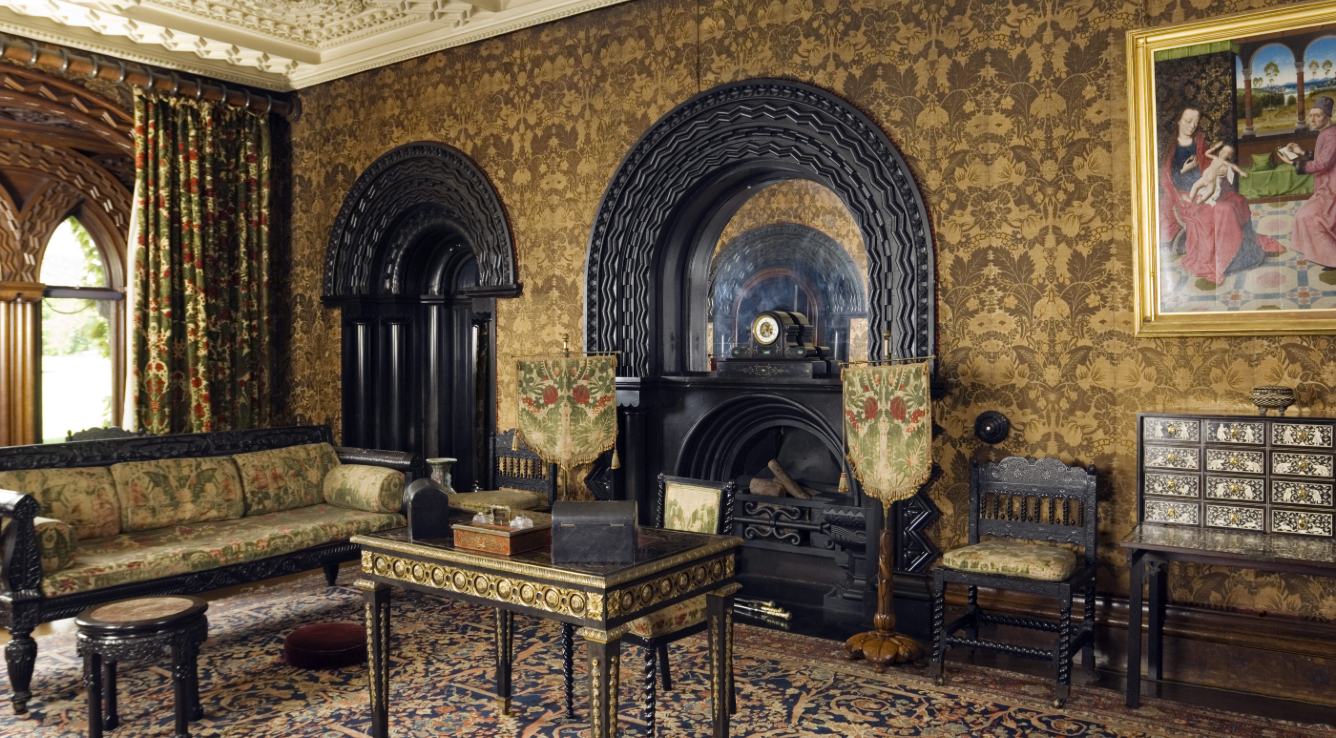
The Ebony Room at Penrhyn Castle, Gwynedd
Chairs of this type survive at Tyntesfield and Penrhyn – both houses furnished from fortunes amassed from colonial activity – but were probably acquired around 1800 (rather than in India in the 17th century) after they were made fashionable by Horace Walpole (1717-97). It has been said that no other group of ‘Indo-European’ furniture has been as misunderstood as this one. Horace Walpole believed that they were English, and even in the 20th century chairs of this type were being described as ‘Jacobean’ or ‘Indo-Portuguese’. The recent revival in scholarly interest in Indian furniture, however, has shown (using inventories of the Dutch East India Company) without doubt that the Coromandel Coast in south-east India was the centre for production. Later examples were made in Sri Lanka and Jakarta, Indonesia.
Arguably the finest Indian furniture in the National Trust collections was made in the city of Visakhapatnam (Vizagapatam) in the state of Andhra Pradesh. A natural harbour with a thriving textile industry, it was also a centre for cabinet-making renowned for its use of ivory inlay and veneers. As European colonial activity in India increased over the first half of the 18th century, territorial wars and the struggle for dominance intensified, and Visakhapatnam was ruled by the Mughal Qutb Shahis (between 1689 and 1724), Nizam (1724–1757) and France (from 1757), before being captured by the British East India Company armies in 1765. This British colonial encroachment in India involved the looting and seizure of its material culture – art, precious objects and resources – but it is also stirred a transfer of materials, techniques, knowledge and fashions which, rather like in Guangzhou and other trading ports, stimulated an export market in furniture specifically for European buyers. It is likely, therefore, that some of the furniture from Visakhapatnam now in English collections was legitimately purchased, although it should also be noted that it did feature among the ‘gifts’ exchanged between Indian rulers and Europeans.
A fold-over table at Tyntesfield and a set of nine ivory-inlaid ebony chairs and a daybed at Charlecote are among the earliest surviving pieces of furniture made in India in an English style. These early pieces, combining Indian techniques and skill with European forms, are made with roughly equal amounts of timber and ivory.
Later, Visakhapatnam cabinet-makers used larger sheets of ivory veneers. The most beautiful furniture was made during this transition and is represented in National Trust collections at Powis Castle, the home of Robert Clive, 1st Baron Clive (1724-74), who commanded the East India Company’s armies in the 1750s and 1760s and acquired much of his collection either as loot or as ‘gifts’ which formed part of the brokering of colonial power. However, the magnificent Visakhapatnam dressing table and dressing mirror at Powis today were probably purchased by Clive for his wife Margaret (d. 1817) and returned to England before 1761, when the dressing table’s feet were replaced by the London cabinet-maker George Bradshaw. Another example is in the collections of Anglesey Abbey.
A spectacular but undocumented cabinet-on-stand, of circa 1770, and also from Visakhapatnam, is at Kingston Lacey. Behind the panelled doors inlaid with intricate representations of palm trees lies a highly elaborately fitted architectural interior in the form of a two-storey house with a colonnade and balustrades.
Another remarkable piece of Indian furniture is the sofa, made in Varanasi (Benares) and part of a larger suite of seat furniture, at Kedleston Hall, Derbyshire. It was acquired by George Curzon, 1st Marquess Curzon of Kedleston (1859-1925) while Viceroy of India (1899-1905) towards the end of the colonial period, from Iswari Narain Singh, Maharaja of Benares, who had lent the sofa and matching chairs to the Calcutta International Exhibition of 1883-4. Curzon amassed a private collection gathered from across China, Southern, and Western Asia. The collection was originally loaned to the Victoria & Albert Museum, but it was arranged as the ‘Eastern Museum’ at Kedleston in 1925 and is currently the subject of a re-presentation and interpretation project, as is the ‘Clive Collection’ at Powis Castle.
Furniture and interiors
A peculiarity and particular strength of the National Trust is that it preserves and presents furniture that has been in the same houses for centuries. In fact, many pieces have been designed and delivered specifically for the spaces in which they can still be seen today.
The Antechamber or Tapestry Room at Osterley was designed by the neo-classical architect Robert Adam. It is hung with a set of tapestries made to measure for the room after designs by the French architect Jacques Germain Soufflot with trompe l’œil medallions after pictures by François Boucher. They were supplied by the Gobelins tapestry manufactory in 1772. The matching giltwood sofa and armchairs, which are covered en suite with Gobelins tapestry, were made for the room by Linnell.
At Saltram, Adam is also likely to have designed the ceiling for the Saloon, as well as the matching carpet woven by Thomas Whitty at Axminster in 1770. The carved and gilded set of eighteen armchairs and two sofas are attributed to Thomas Chippendale, who repeatedly collaborated with Robert Adam, and to whom John Parker, later 1st Baron Boringdon, paid ‘£225’ in 1771/2, although it has been argued this total sum probably does not reflect the true scale of the commission.
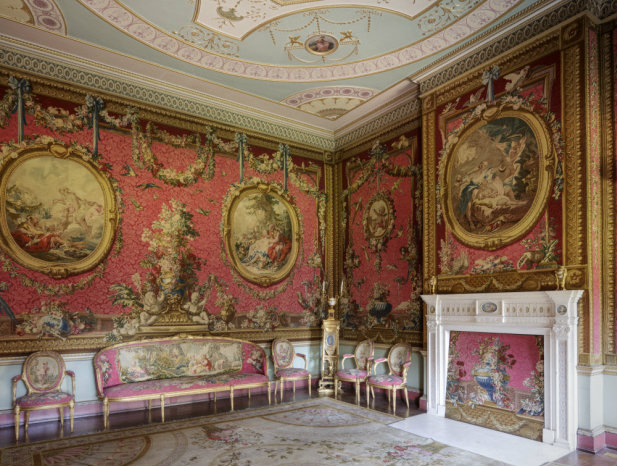
The Tapestry Room designed by Robert Adam, 1772
Osterley Park, London
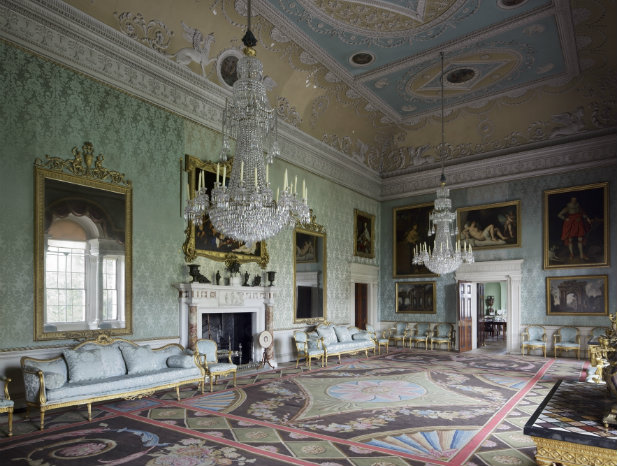
The Saloon designed by Robert Adam, c.1768-72
Saltram, Devon
Conclusion
The National Trust’s extensive collection of furniture is contained in some 200 houses, all of which have their own histories and traditions. This brief survey can only hint at its quality and variety, its connection to craftsmen, collectors and patrons, and its immense value to art history.
In 2015, with generous support from the Paul Mellon Centre for Studies in British Art and the Royal Oak Foundation, the Trust embarked upon a research project to catalogue the furniture collection and update its online entries.
Notes
[i] Martin Dury in Robin Fedden (ed.), Treasures of The National Trust, London 1976, p. 83.
[ii] Percy Macquoid and Ralph Edwards, The Dictionary of English Furniture (Softback Edition, 1986), 3 vols., Vol. III, Figure 24 & p. 250.
[iii] C. Gilbert, The Life & Work of Thomas Chippendale (London, 1978), Vol. I, p. 185 [30th June 1767].
